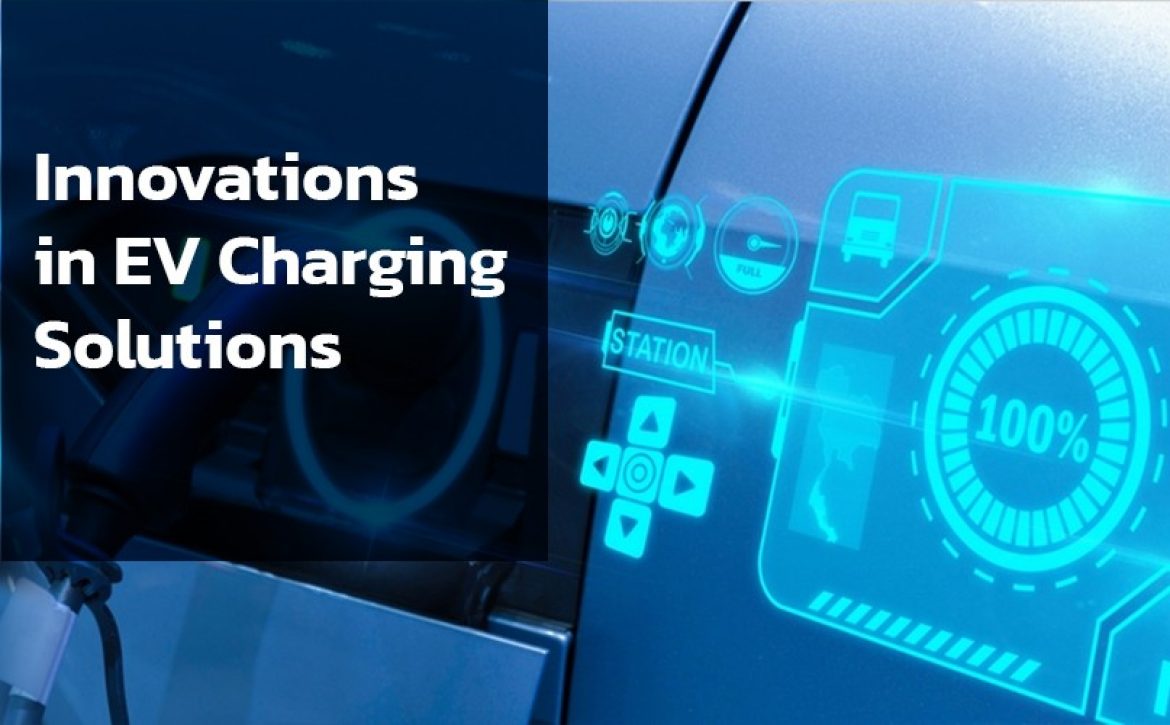How Innovations in EV Charging Solutions are shaping the Future of the Electric Mobility Revolution
The EV industry has witnessed remarkable growth in recent years, reflecting a global shift towards sustainable and environmentally conscious transportation. With this surge in EV adoption, the development of efficient and user-friendly EV charging solutions has become paramount. EV chargers, ranging from standard home chargers to cutting-edge ultrafast DC chargers and multiport charging stations, play a pivotal role in shaping the future of mobility. In this era of rapid transformation, it is essential to explore the various facets of EVs, their charging infrastructure, and the evolution of EV charger technology.
The Role of PLC Modules, Power Modules, and Rectifier Units
EV chargers are intricate systems comprising essential components that ensure efficient and secure EV charging. Three crucial components include PLC (Programmable Logic Controller) modules, power modules, and rectifier units. PLC modules serve as the chargers’ control center, executing commands, and managing the charging process. Power modules convert grid AC power into the appropriate DC form for EV batteries. Rectifier units, a specific type of power module, maintain stable and controlled DC voltage and current for the vehicle. These components work together, providing secure, efficient, and rapid charging, emphasizing user safety and grid stability. As EV technology progresses, these components will play a pivotal role in shaping the future of EV charging infrastructure.
Interoperability and the Importance of Standardization in Electric 2-Wheelers
Interoperability and standardization are crucial for electric 2-wheelers to reach their full potential as a widespread mode of transportation. Interoperability ensures that these vehicles can seamlessly connect with diverse charging infrastructure, regardless of the brand, relying on standardization as its backbone. Standardizing charging connectors such as CCS2 will simplify the search for compatible charging stations. Standardized communication protocols will facilitate smooth connections, governing data exchange and payment process. Implementing government policies that will mandate specific standards in manufacturing and infrastructure installation will further propel the electric 2-wheeler revolution. All of this will eventually lead to market growth, enhanced energy efficiency, and consumer convenience along with the promotion of sustainability, creating a cleaner and brighter future of urban mobility.
The Synergy of IoT, OCPI, and Smart Charging Technology
The seamless integration of IoT, OCPI, and Smart Charging Technology is reshaping the electric mobility landscape, offering a comprehensive solution that embodies convenience, efficiency, and sustainability in EV charging. IoT links electric mobility stakeholders through sensors and IoT sensors supply real-time data. OCPI enables seamless communication between charging networks ensuring interoperability and smart charging technology optimizes the charging process, culminating in a seamless and convenient experience for EV users. Making EV charging efficient and eco-friendly will result in a holistic e-mobility ecosystem.
Bidirectional EV Chargers
In recent times, bidirectional EV chargers have emerged as a pioneering technology with the ability to revolutionize the electric mobility and energy sectors. These chargers are designed to draw electricity from solar panels, effectively harnessing the power of the sun to charge electric vehicles. Beyond EV charging, bidirectional chargers can further optimize energy usage by diverting surplus electricity to charge the associated batteries, ensuring efficient energy storage. Subsequently, any surplus electricity when the batteries are fully charged and the EV is not connected is directed back to the grid, contributing to the overall energy supply. Moreover, during nights, the fully charged batteries serve as a reliable backup, providing electricity to the charger for hassle-free EV recharging. This innovative technology not only enhances energy sustainability but also promotes grid stability and overall energy efficiency.
Portable EV Chargers
Portable EV chargers are compact and lightweight chargers that have managed to revolutionize the world of electric mobility by giving EV owners the ability to recharge their vehicles using standard electrical outlets, eliminating the need for complex charging infrastructure. This feature helps a lot in areas with limited charging infrastructure. They are universally compatible which allows EV owners to charge their vehicles effortlessly. These chargers act as an essential backup charging solution, ensuring that EVs can be recharged even in unexpected emergencies, adding an extra layer of security for EV owners. As the electric vehicle industry continues to grow, these devices are set to become instrumental in promoting large-scale EV adoption.
The Significance of Multiport EV Charging
Multiport charging stations are another remarkable innovation in the world of EV charging. By accommodating multiple vehicles simultaneously, they significantly reduce charging congestion at public locations, ensuring that more EV owners can access charging stations without long wait times. They optimize space utilization and their scalability allows for easy expansion to meet the growing demand for EV charging. Multiport charging stations offer cost-effective solutions, benefiting both EV charging solutions providers and EV owners alike. Overall, multiport charging stations are a significant advancement in making EVs more accessible, efficient, and sustainable.
Path Ahead
The incoming of new technology in the arena of EV charging is pivotal in driving and promoting widespread EV adoption. These technologies are breaking down the barriers that hinder mass EV adoption and are enhancing convenience, accessibility, and sustainability, making electric mobility more appealing and feasible to a broader audience. In a way, these developments are paving the way for a cleaner, brighter, and greener future of transportation and with each step forward in charging technology, the path to EV adoption seems to become smoother and more promising.

